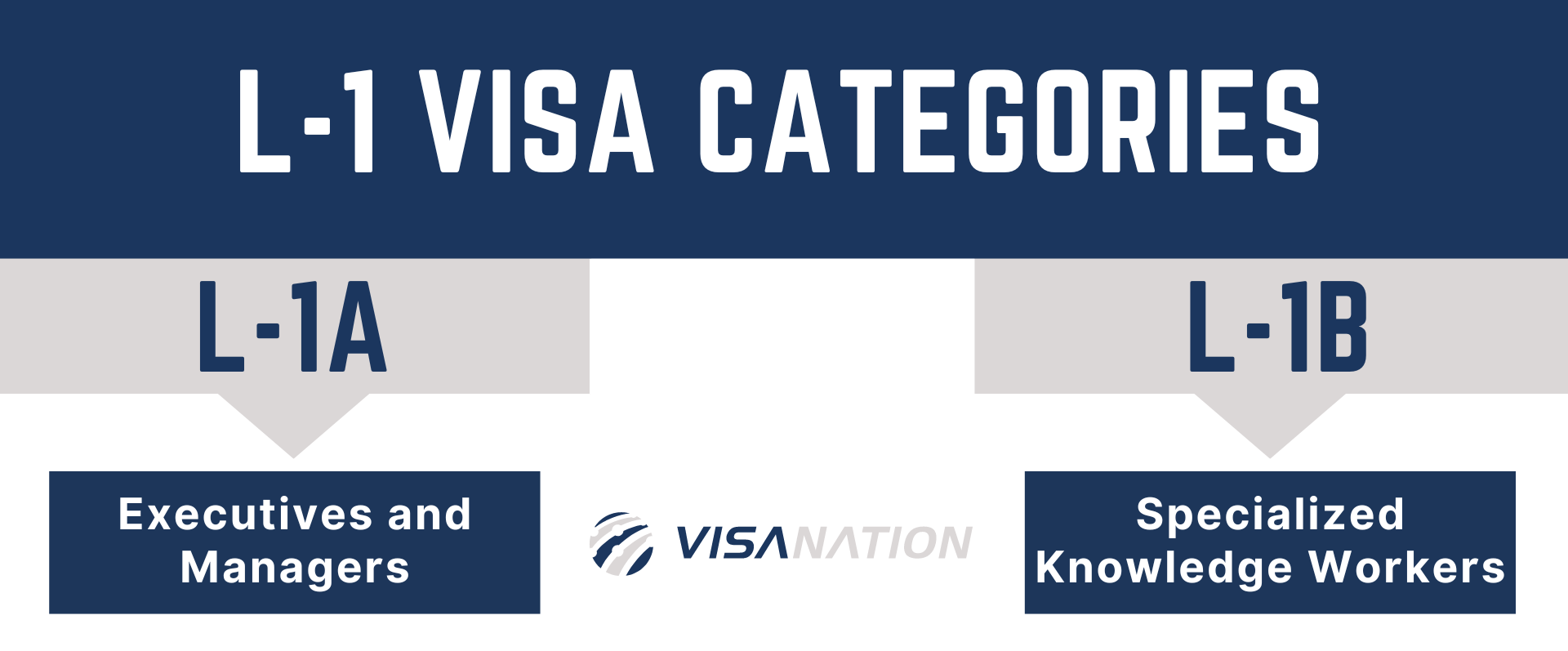Facts About L1 Visa Revealed
Table of ContentsThe Best Strategy To Use For L1 VisaThe Greatest Guide To L1 Visa7 Easy Facts About L1 Visa DescribedL1 Visa for BeginnersThe 5-Minute Rule for L1 VisaAll About L1 Visa5 Simple Techniques For L1 Visa
The L-1 visa is an employment-based visa classification developed by Congress in 1970, allowing international firms to move their managers, executives, or essential workers to their united state procedures. It is commonly referred to as the intracompany transferee visa. There are 2 main kinds of L-1 visas: L-1A and L-1B. These kinds appropriate for staff members worked with in different settings within a business.Furthermore, the beneficiary must have operated in a supervisory, executive, or specialized worker placement for one year within the three years coming before the L-1A application in the foreign firm. For new workplace applications, foreign work needs to have remained in a managerial or executive capacity if the recipient is pertaining to the United States to function as a manager or exec.
for as much as 7 years to look after the operations of the united state affiliate as an executive or supervisor. If provided for an U.S. firm that has been operational for greater than one year, the L-1A visa is originally approved for as much as three years and can be prolonged in two-year increments.
Some Known Details About L1 Visa
If given for an U.S. company functional for greater than one year, the first L-1B visa is for as much as 3 years and can be prolonged for an added two years. Alternatively, if the united state firm is recently established or has been operational for much less than one year, the first L-1B visa is issued for one year, with extensions offered in two-year increments.
company. The maximum remain allowed by each visa also varies. L-1A visa owners can remain in the U.S. for up to 7 years, while L-1B visa owners can function in the united state for approximately 5 years. L-1A visa can cause an EB-1C immigrant visa, whereas L-1B visa can not lead straight to irreversible house condition.


Conversely, if you possess special or innovative expertise within your business, you might be eligible for transfer to the U.S. to use your specialized skills. The L-1 visa procedure entails complicated procedures, necessitating comprehensive documentation and careful scrutiny of lawful needs on a case-by-case basis. In this respect, the aid of a migration lawyer is essential for making sure the successful completion of the procedure.
The L-1 visa stands as a vital tool for worldwide organizations, facilitating the transfer of essential employees in between overseas and U.S. branches. Nonetheless, browsing the details of this visa classification can be daunting. To clarify this subject, we have actually assembled a comprehensive guide resolving the most frequently asked concerns regarding the L-1 visa: At its core, the L-1 visa makes it possible for multinational companies to move specific employees from consular services to united state
L1 Visa for Beginners
entities, such as parent, subsidiary, or affiliate. Additionally, the employee being moved must have functioned for the abroad firm for at the very least one continual year within the coming before 3 years. Specialized expertise describes knowledge or understanding of the business's products, services, processes, or procedures that is not readily available in the U.S.
Yes, L-1 visa holders can bring their partners and unmarried children under 21 years of age to the United States on L-2 visas. Dependent relative are allowed to research in the U.S. and, in many cases, get employment authorization. L-1 visa holders might go after irreversible residency (copyright) status with employment-based migration paths, such as the EB-1C category for multinational managers and execs.
Citizenship and Immigration Services (USCIS), in addition to sustaining documentation demonstrating the certifying partnership in between the overseas and united state entities and the credentials of the staff member being transferred. While the L-1 visa is a prominent selection for intra-company transfers, there are alternative visa options offered relying on the individual's certifications and scenarios.
Yes, partners of L-1 visa holders on L-2 visas are accredited to function without having to get work permission. While there is no particular requirement for L-1 visa owners to maintain an international residence, they are expected to keep ties to their home country and mean to leave the United States upon completion of their accredited stay.
The residential worker should have been employed by the L-1 visa holder for a minimum of one year within the coming before three years and should plan to work full time for the visa holder in the U.S. When making an application for an extension of remain on an L-1 visa, companies must continue to demonstrate the qualifying partnership in between the abroad and U.S.
The Only Guide to L1 Visa

and international entitiesProof of the employee's role and credentials (e.g., task descriptions, business graphes)Proof of continued service operations in both the united state and international areas The U.S. Citizenship and Immigration Provider (USCIS) provides certain interpretations for important terms: "The employee's capacity to choose of broad latitude without much oversight." "The capacity of the employee to manage and regulate the work of expert staff members and to manage the company" or "to handle an important function of the organization at a high level, without straight supervision of others." "Special expertise possessed by a person of the requesting company's products, services, contact us study, tools, strategies, monitoring, or other rate of interests and its application in global markets" or "innovative level of knowledge or expertise in the organization's procedures and procedure." For new workplace L-1 applications, the company has to show financial capability and give thorough plans to develop operations in the united state
/f/84976/1003x1003/0d3a5ff0ea/l1a-visa_-everything-you-should-know-index.png)
8 Easy Facts About L1 Visa Explained
L-1A visa owners (managers and executives) can expand their remain in increments of up to 2 years for an optimum total keep of seven years. L-1B visa owners (specialized knowledge employees) can likewise expand their visas in two-year increments, but they are restricted to a five-year keep. A worker that gets the L-1 visa might additionally bring a spouse and dependent youngsters (single and under 21 years of age) for the visa term.
This permits business to maintain their blanket L-1 status much more conveniently. Lots of L-1 visa holders think about lasting prospects in the United States, and an usual concern develops about transitioning to long-term residency.
L-1A visas are developed for managers and execs, while L-1B visas are for employees with specialized understanding, as determined by the USCIS. L-1A visa holders usually have more senior functions within the company, looking after divisions or running operations. L-1B visa owners possess extensive expertise of the company's one-of-a-kind approaches, items, or solutions.
Indicators on L1 Visa You Need To Know
Both visa kinds are originally provided for one to 3 years, with the opportunity of extensions in two-year increments. Yes, spouses L1 Visa law firm of L-1 visa owners (L-2 visa holders) are given work consent case to standing. This implies they no more require to submit a different application for work permission to operate in the USA.